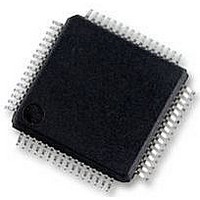P89LPC9401FBD NXP Semiconductors, P89LPC9401FBD Datasheet - Page 42

P89LPC9401FBD
Manufacturer Part Number
P89LPC9401FBD
Description
IC, MCU 8BIT 80C51, LCD DRIVER, SMD
Manufacturer
NXP Semiconductors
Datasheet
1.P89LPC9401FBD551.pdf
(59 pages)
Specifications of P89LPC9401FBD
Controller Family/series
(8051) 8052
Core Size
8bit
No. Of I/o's
23
Program Memory Size
8KB
Ram Memory Size
256Byte
Cpu Speed
18MHz
Oscillator Type
External, Internal
No. Of Timers
4
No.
RoHS Compliant
Available stocks
Company
Part Number
Manufacturer
Quantity
Price
Part Number:
P89LPC9401FBD
Manufacturer:
NXP/恩智浦
Quantity:
20 000
Company:
Part Number:
P89LPC9401FBD,551
Manufacturer:
NXP Semiconductors
Quantity:
10 000
Company:
Part Number:
P89LPC9401FBD,557
Manufacturer:
NXP Semiconductors
Quantity:
10 000
Company:
Part Number:
P89LPC9401FBDЈ¬551
Manufacturer:
NXP
Quantity:
3 048
Philips Semiconductors
P89LPC9401_1
Preliminary data sheet
7.27.10 Hardware activation of the boot loader
7.27.9 Power-on reset code execution
7.28 User configuration bytes
7.29 User sector security bytes
The P89LPC9401 contains two special flash elements: the Boot Vector and the Boot
Status Bit. Following reset, the P89LPC9401 examines the contents of the Boot Status
Bit. If the Boot Status Bit is set to zero, power-up execution starts at location 0000H, which
is the normal start address of the user’s application code. When the Boot Status Bit is set
to a value other than zero, the contents of the Boot Vector are used as the high byte of the
execution address and the low byte is set to 00H.
Table 9
settings are different than the original P89LPC932. Tools designed to support the
P89LPC9401 should be used to program this device, such as Flash Magic version
1.98, or later. A factory-provided boot loader is preprogrammed into the address space
indicated and uses the indicated boot loader entry point to perform ISP functions. This
code can be erased by the user. Users who wish to use this loader should take
precautions to avoid erasing the 1 kB sector that contains this boot loader. Instead,
the page erase function can be used to erase the first eight 64-byte pages located in
this sector. A custom boot loader can be written with the Boot Vector set to the custom
boot loader, if desired.
Table 9:
The boot loader can also be executed by forcing the device into ISP mode during a
power-on sequence (see the P89LPC9401 User manual for specific information). This has
the same effect as having a non-zero status byte. This allows an application to be built that
will normally execute user code but can be manually forced into ISP operation. If the
factory default setting for the Boot Vector (1FH) is changed, it will no longer point to the
factory preprogrammed ISP boot loader code. After programming the flash, the status
byte should be programmed to zero in order to allow execution of the user’s application
code beginning at address 0000H.
Some user-configurable features of the P89LPC9401 must be defined at power-up and
therefore cannot be set by the program after start of execution. These features are
configured through the use of the flash byte UCFG1. Please see the P89LPC9401 User
manual for additional details.
There are eight User Sector Security Bytes on the P89LPC9401 device. Each byte
corresponds to one sector. Please see the P89LPC9401 User manual for additional
details.
Device
P89LPC9401
shows the factory default Boot Vector settings for these devices. Note: These
Default Boot Vector values and ISP entry points
8-bit two-clock 80C51 microcontroller with 32 segment
Default
Boot Vector
1FH
Rev. 01 — 5 September 2005
Default
boot loader
entry point
1F00H
Default boot loader
code range
1E00H to 1FFFH
© Koninklijke Philips Electronics N.V. 2005. All rights reserved.
P89LPC9401
1 kB sector
range
1C00H to 1FFFH
4 LCD driver
42 of 59
















